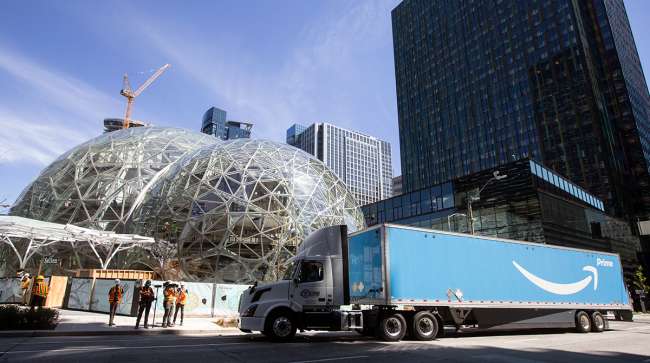Analysis: To Understand Amazon’s Delivery Ambitions, Consider the Long Game

Amazon.com Inc. announced Oct. 6 a new experimental delivery service called Seller Flex. The new service entails Amazon taking greater control over the final mile of delivery from the warehouses of its merchant partners to the doorsteps of customers, and it could have big implications.
First, a quick primer for folks who only know Amazon by its website and boxes: The company distinguished itself in e-commerce by offering quick, free delivery to Amazon Prime members who pay $99 a year. It continues to expand its network of warehouses around the country to store a growing assortment of products closer to shoppers. Many sellers on Amazon’s site send their products to Amazon warehouses because the company can stow, pack and ship them more quickly and affordably. Now Amazon is looking to help those same merchants make deliveries directly to the customer.
What it means in the near term:
Amazon will continue to use its existing delivery partners, including UPS Inc. and FedEx Corp. It can’t build a new delivery service overnight. But UPS and FedEx will make less money on those same deliveries if they are purchased by Amazon, which negotiates better rates from couriers thanks to its large volume, Morgan Stanley noted Oct. 5. This can also help reduce congestion in Amazon warehouses during the busy holiday shopping season. Keeping products out of its warehouses while still delivering them within two days reduces that congestion and can lower costs for Amazon.
What it means in the long term:
For now, the trial brings Amazon into the facilities of businesses that sell things on Amazon.com. In the future—and you have to look far ahead when considering the movements of CEO Jeff Bezos—Amazon could expand the services to any merchant selling anything to anyone. This would push it deeper into the territory of UPS and FedEx.
Even if Amazon doesn’t buy fleets of trucks to take on UPS and FedEx directly, it could expand its relationships with smaller delivery partners like XPO Logistics Inc. and JB Hunt Transport Services Inc., companies with trucks that can reach customers around the country but small enough that Amazon could have greater sway over their operations than it does with UPS and FedEx. Cowen Inc. published a note Oct. 5 predicting XPO, in particular, could potentially gain from Amazon’s new delivery service.
UPS ranks No. 1, FedEx No. 2, XPO No. 3 and J.B. Hunt No. 4 on the Transport Topics Top 100 list of the largest North American for-hire carriers.




